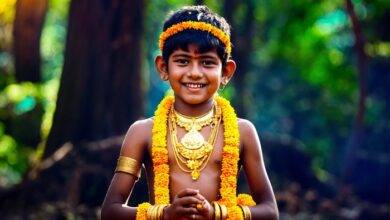Parivahan Sewa Delhi: Revolutionizing Urban Mobility

Introduction
Parivahan Sewa Delhi has emerged as a significant player in the realm of urban transportation, offering a diverse range of services to cater to the ever-growing needs of Delhi’s commuters. This comprehensive public transport system aims to provide efficient, affordable, and environmentally friendly mobility solutions to the city’s residents. In this blog post, we will delve into the various aspects of Parivahan Sewa Delhi, from its diverse modes of transport to its impact on the city’s urban landscape.
The Vision of Parivahan Sewa Delhi
Parivahan Sewa Delhi envisions a future where public transport is the preferred mode of commuting for Delhiites. By providing a seamless and integrated transportation network, the initiative aims to reduce traffic congestion, air pollution, and dependence on private vehicles. The ultimate goal is to create a sustainable and efficient urban transport system that enhances the quality of life for all.
A Multimodal Approach
Parivahan Sewa Delhi offers a multimodal approach to public transportation, encompassing various modes of transport to cater to diverse needs. These modes include:
- Metro Rail: The Delhi Metro, one of the world’s largest rapid transit systems, provides efficient and reliable connectivity across the city.
- Bus Rapid Transit (BRT): The BRT system offers dedicated bus lanes, frequent services, and comfortable buses to facilitate rapid transit.
- Conventional Buses: A fleet of conventional buses operates on various routes, connecting different neighborhoods and commercial areas.
- Auto-Rickshaws: Auto-rickshaws, a popular mode of transport, are regulated and integrated into the Parivahan Sewa Delhi network.
- Taxi Services: Licensed taxi services, including app-based taxis, are part of the Parivahan Sewa Delhi ecosystem.
Seamless Integration of Modes
Parivahan Sewa Delhi emphasizes seamless integration between different modes of transport. This integration is achieved through:
- Intermodal Transfer Facilities: Well-designed intermodal transfer facilities, such as metro stations and bus terminals, provide convenient connections between different modes.
- Timely Schedules and Frequency: Coordinated schedules and frequent services ensure smooth transfers between modes.
- Real-Time Information Systems: Real-time information systems, including digital displays and mobile apps, provide commuters with up-to-date information on service schedules, delays, and disruptions.
Benefits of Parivahan Sewa Delhi
Parivahan Sewa Delhi offers a multitude of benefits to Delhi’s residents:
- Reduced Traffic Congestion: By promoting public transport, the initiative helps alleviate traffic congestion on roads.
- Improved Air Quality: Reduced vehicular emissions contribute to improved air quality in the city.
- Time and Cost Savings: Public transport is often more affordable and time-efficient than private vehicle usage.
- Enhanced Accessibility: Parivahan Sewa Delhi provides accessible transportation options for people with disabilities.
- Sustainable Urban Development: By promoting public transport, the initiative contributes to sustainable urban development.
Challenges and Opportunities
While Parivahan Sewa Delhi has made significant strides, challenges remain:
- Infrastructure Development: Continued investment in infrastructure is necessary to expand and improve the public transport network.
- Operational Efficiency: Ensuring efficient operations, such as timely services and reduced wait times, is crucial.
- Public Awareness and Behavior Change: Educating the public about the benefits of public transport and encouraging a shift from private vehicles is essential.
Despite these challenges, Parivahan Sewa Delhi presents numerous opportunities:
- Innovation and Technology: The adoption of advanced technologies, such as smart ticketing and real-time passenger information systems, can enhance the user experience.
- Public-Private Partnerships: Collaborations between the government and private sector can accelerate the development of public transport infrastructure and services.
- Integration with Non-Motorised Transport: Promoting non-motorised transport options like walking and cycling can further reduce traffic congestion and improve air quality.
The Future of Parivahan Sewa Delhi
The future of Parivahan Sewa Delhi is promising. With continued investment, innovative solutions, and a strong commitment to public transport, the initiative can transform Delhi into a truly sustainable and livable city. By prioritizing public transport, Delhi can set an example for other urban centers in India and around the world.
Conclusion
Parivahan Sewa Delhi is a powerful tool for shaping the future of urban mobility in Delhi. By providing a comprehensive and integrated public transport system, the initiative is making significant strides in addressing the challenges of urban congestion and pollution. As the city continues to grow, Parivahan Sewa Delhi will play a crucial role in ensuring a sustainable and efficient transportation network for generations to come.
FAQs
-
What are the different modes of transport available under Parivahan Sewa Delhi? Parivahan Sewa Delhi offers a multimodal approach, including metro rail, bus rapid transit, conventional buses, auto-rickshaws, and taxi services.
-
How can I access real-time information about public transport services in Delhi? Real-time information about service schedules, delays, and disruptions can be accessed through digital displays at stations and bus stops, as well as through mobile apps.
-
What are the benefits of using public transport in Delhi? Public transport offers several benefits, including reduced traffic congestion, improved air quality, time and cost savings, enhanced accessibility, and contribution to sustainable urban development.
-
What are the challenges faced by Parivahan Sewa Delhi? Challenges include infrastructure development, operational efficiency, and public awareness and behavior change.
-
What is the future outlook for Parivahan Sewa Delhi? The future of Parivahan Sewa Delhi is promising, with opportunities for innovation, public-private partnerships, and integration with non-motorised transport.





